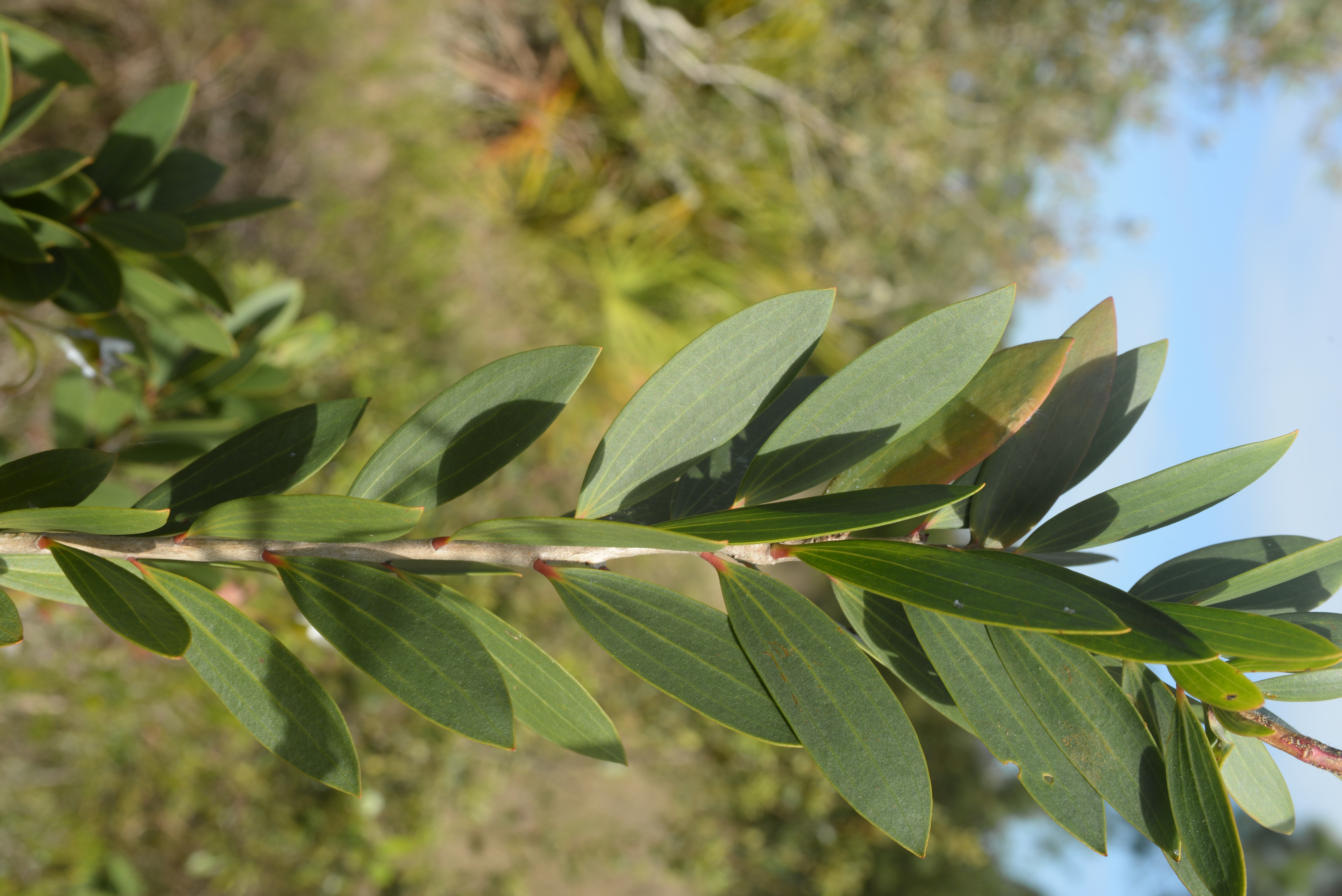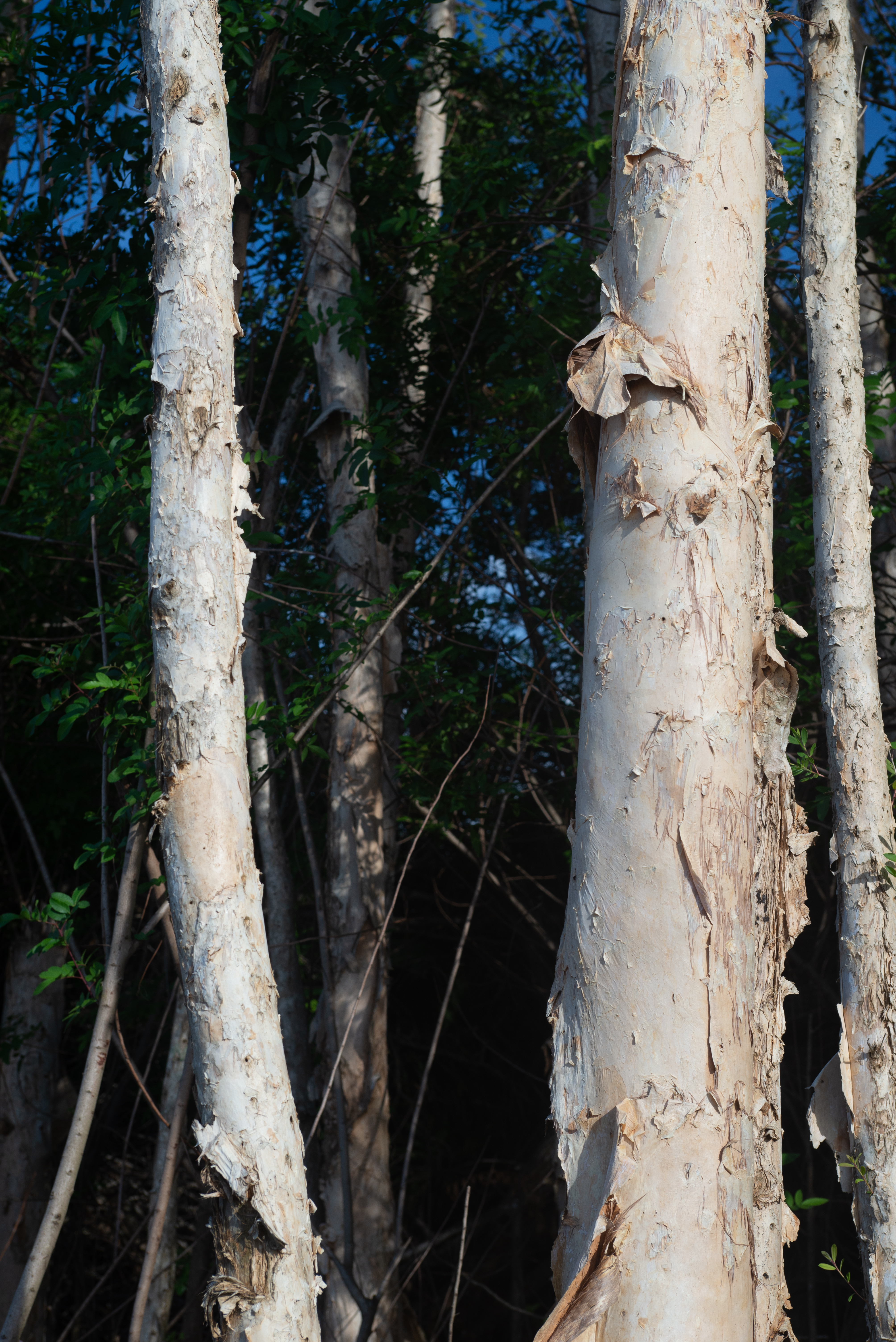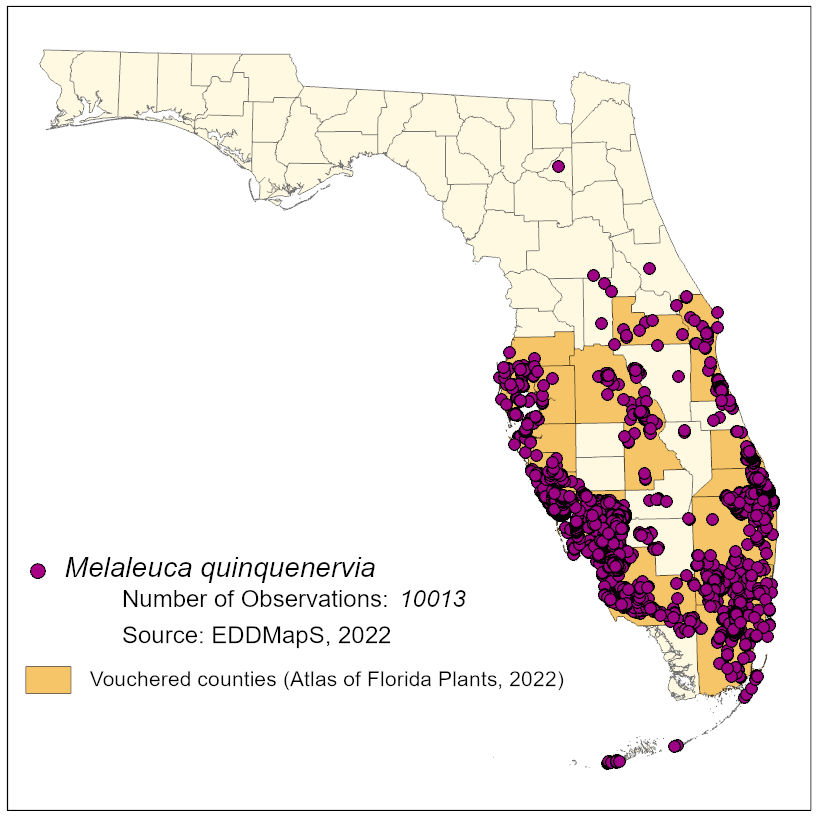Common Name: melaleuca
Family: Myrtaceae
Common Synonyms: none
USDA Hardiness Zone: 9a-11
Growth Habit: Shrub, Tree
Origin: Tropical Asia, Australasia, Pacific
FISC Category: 1
FDACS Listed Noxious Weed: Yes
Introduction Date: Earliest Florida specimen available vouchered in 1926
IFAS Assessment:


Melaleuca can easily be distinguished by its white, papery, peeling bark. Sheets of bark can feel like thin styrofoam. The tree can grow to be 35 m high. Leaves are simple, alternate, pale green and have a sweet odor when crushed. Veination is often a pale pink, and leaves are outlined in pale pink. Flowers resemble bottle brushes, feathery and seeming to emerge directly from the stem tips. Fruit are usually in clusters around stem tips, in round, woody capsules.
Wet flatwoods and disturbed sites. Central and Southern peninsula
NA

NA
Langeland, K.A., H.M. Cherry, C.M. McCormick, K.C. Burks. 2008. Identification and Biology of Non-Native Plants in Florida's Natural Areas-Second Edition. IFAS Publication SP 257. University of Florida, Gainesville, Florida.
http://plants.ifas.ufl.edu/plant-profiles/http://plants.ifas.ufl.edu/plant-profiles/ accessed 13 June, 2017
http://davesgarden.com accessed 13 June, 2017
IFAS. 2011. Integrated Management of Nonnative Plants in Natural Areas of Florida. http://edis.ifas.ufl.edu/pdffiles/WG/WG20900.pdf. Accessed June 13, 2017.